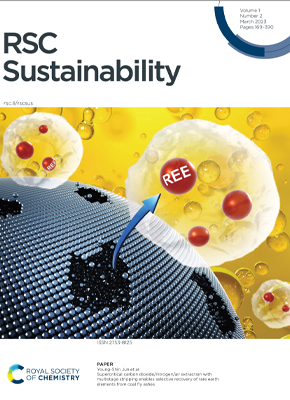Your cart is currently empty!
Rare Earth Elements Extracted From Waste Using Novel Process
Rare earth elements (REE), a collection of 17 metallic elements, are present in almost all modern devices, including computers, telephones, televisions, and almost every component of a car. The demand for these components is rising every year, but the supply is geopolitically constrained and is extracted using unsustainable environmental practices.
A professor of energy, environmental and chemical engineering at Washington University in St. Louis, Young-Shin Jun and her team have developed a proof of concept solution by extracting REEs from coal fly ash which is a fine powdery waste product from the combustion of coal.
Young-Shin Jun has stated, “We wanted to use a greener process to extract REEs than traditionally more harmful processes, since the coal has already been used, this process is ultimately a pathway toward reduction and remediation of waste products.”
A former student of Jun’s, Yaguang Zhu who is now a postdoctoral scholar at Princeton University developed a novel extraction process of supercritical fluid which is commonly used to decaffeinate coffee to recover these vitally important REEs from materials that would have otherwise been disposed of in a landfill.
The potential worth of the REEs that might be extracted from coal fly ash in the U.S. is believed to be assessed at more than $4 billion yearly, with more than 79 million metric tonnes of coal fly ash produced there each year.
The results of their research, which are published in the March 2023 issue of RSC Sustainability, are the first to demonstrate how effectively ordinary and obtainable supercritical fluids, such as carbon dioxide, nitrogen, and air, can extract REEs and separate contaminants.

– RSC Journal : Royal Society of Chemistry
Additionally, they discovered that supercritical carbon dioxide reduced the levels of contaminants in the finished REE product through tests utilising coal fly ash. In contrast to the initial supply of coal fly ash, which included 0.0234% REEs, their end products contained up to 6.47% REEs.
Overall, the extraction method used by Jun’s team included two steps: First, the coal fly ash’s metal ions, including REEs and impurities, leach out and combine with nitric acid to generate metal nitrates. Then, the metal nitrates combine with tributyl phosphate (TBP). They discovered that the REEs formed complexes that could be recovered from coal fly ash when combined with supercritical carbon dioxide, nitrogen, or air.
Following extraction, their multistage stripping procedure gathered REEs and reduced the impurity content. Nitric acid and TBP used in the procedure can be entirely recycled numerous times without losing effectiveness, which reduces concerns about disposal.
